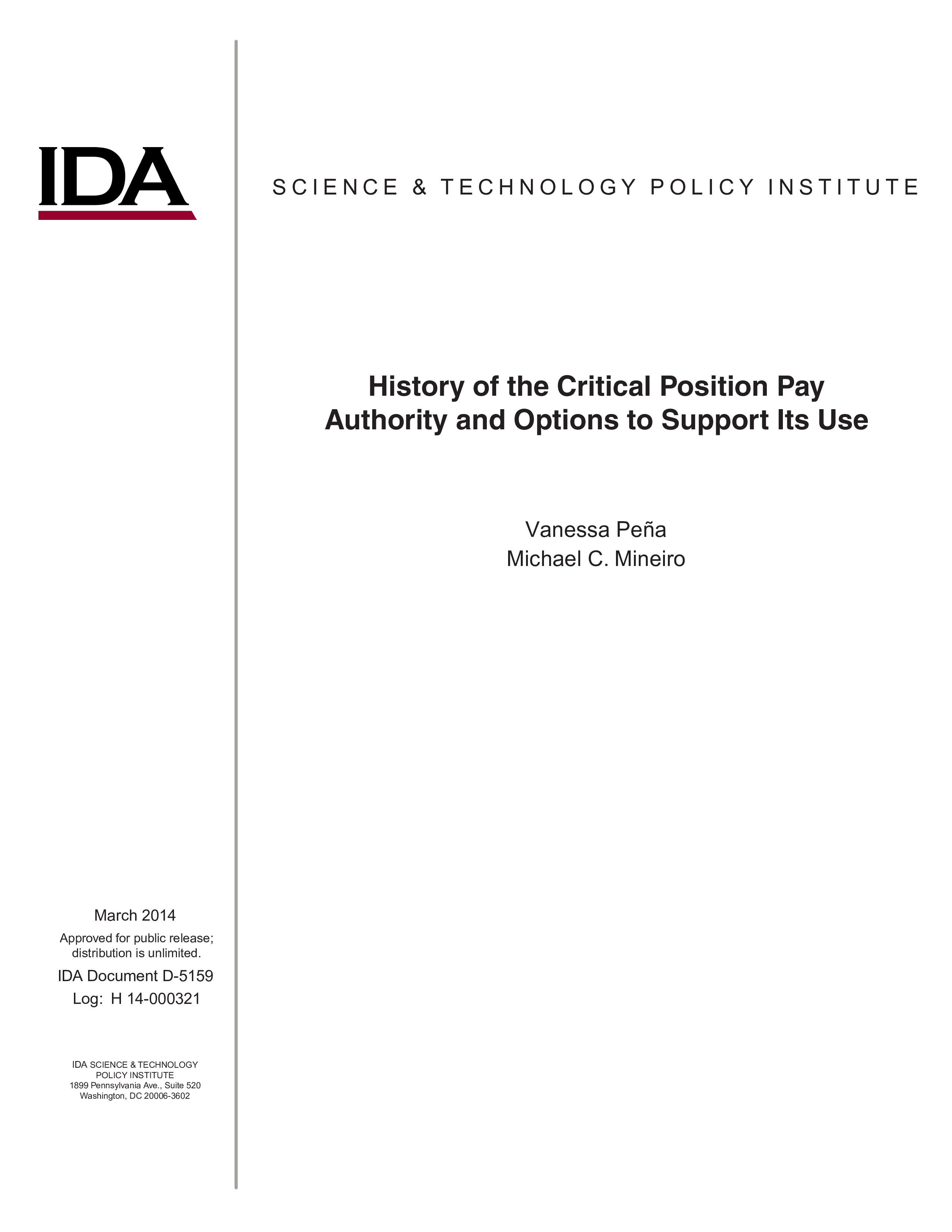The Critical Position Pay Authority (CPPA), enacted in 1990 and codified as 5 U.S.C. § 5377, was created to facilitate the recruitment and retention of Federal employees. Although OPM is authorized to approve as many as 800 positions, only 3 active positions with pay were administered through the CPPA in fiscal year 2011, and only 34 positions have been approved since the CPPA’s enactment in 1990. To explore the potential issues with using the CPPA, the Office of Science and Technology Policy (OSTP) asked the IDA Science and Technology Policy
Institute (STPI) to study the history of use of the CPPA, characteristics of critical positions approved under the CPPA, perceived benefits and
challenges, and recommendations to improve the CPPA’s utility. The study team used three sources of information for this work: semi-structured
interviews, literature review, and OPM annual reports. The most likely reasons why CPPA is not being used more often by agencies are a lack of
knowledge and training among human capital officials and hiring managers regarding the CPPA, restrictions of the current regulatory framework,
the availability of alternative pay authorities, and agency cultures that impede its use.

